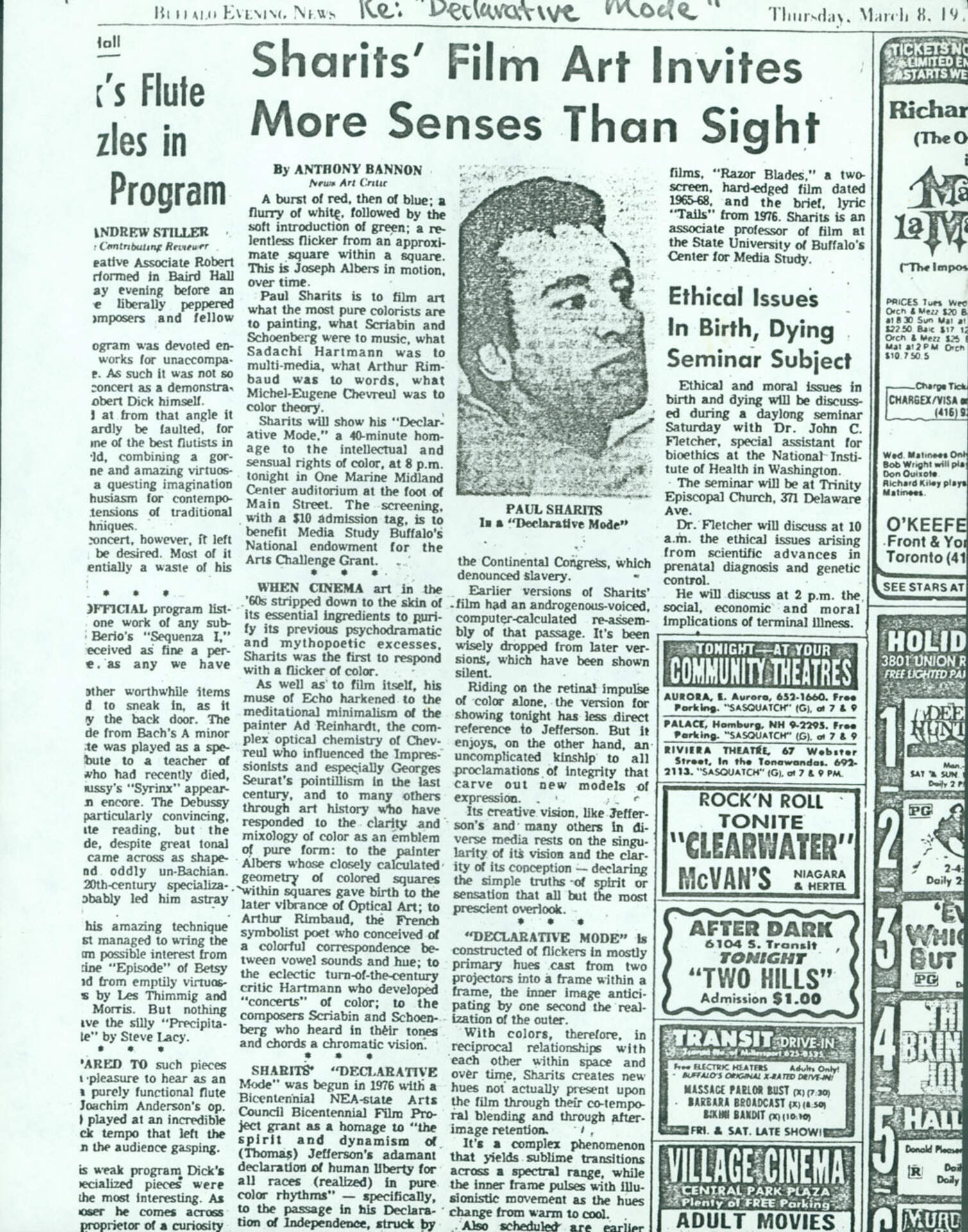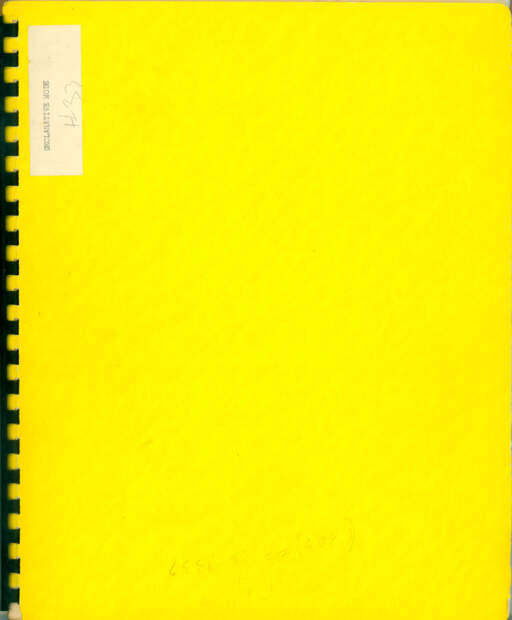Paul Sharits (1943-1993)Sharit's Film Art Invites More Senses Than Sight
Copy of article on paper
11 x 8 1/2 inches
Gift of Christopher and Cheri Sharits, 2006
Sharit’s Film Art Invites More Senses Than Sight
By: Anthony Bannon- News Art Critic
A burst of red, then of blue: a flurry of white, followed by the soft introduction of green; a relentless flicker from an approximate square within a square. This is Joseph Albers in motion, over time.
Paul Sharits is to film art what the most pure colorists are to painting, what Scriabin and Schoenberg were to music, what Sadachi Hartmann was to multi-media, what Arthur Rimbaud was to words, what Michel-Eugene Chevreul was to color theory.
Sharits will show his “Declarative mode” a 40-minute homage to the intellectual and sensual rights of color, at 8 p.m. tonight in One Marine Midland Center auditorium at the foot of Main Street. The screening, with a $10 admission tag, is to benefit Media Study Buffalo’s National endowment for the Arts Challenge grant.
WHEN CINEMA art in the 60’s stripped down to the skin of tis essential ingredients to purify its previous psychodramatic and mythopoetic excesses, Sharits was the first to respond with a flicker of color.
As well as to film itself, his muse of Echo harkened to the meditational minimalism of the painter Ad Reinhardt, the complex optical chemistry of Chevreul who influenced the Impressionists and especially Georges Seurat’s pointillism in the last century, and to many others through art history who have responded to the clarity and mixology of color as an emblem of pure form: to the painter Albers whose closely calculated geometry of colored squares within squares gave birth to the later vibrance of Optical Art; to Arthur Rimbaud, the French symbolist poet who conceived of a colorful correspondence between vowel sounds and hue; to the eclectic turn-of-the-century critic Hartmann who developed “concerts” of color; to the composers Scriabin and Schoenberg who heard in their tones and chords a chromatic vision.
SHARITS’ “DECLARATIVE Mode” was begun in 1976 with a Bicentennial NEA-state Arts Council Bicentennial Film Project grant as a homage to “the spirit and dynamism of (Thomas) Jefferson’s adamant declaration of human liberty for all races (realized) in pure color rhythms”—specifically, to the passage in his Declaration of Independence, struck by the Continental Congress, which denounced slavery.
Earlier versions of Sharits’ film had an adrogenous-voiced, computer-calculated re-assembly of that passage. It’s been wisely dropped from later versions, which have been shown silent.
Riding on the retinal impulse of color alone, the version for showing tonight had less direct reference to Jefferson. But it enjoys, on the other hand, an uncomplicated kinship to all proclamations of integrity that carve out new models of expression.
Its creative vision, like Jefferson’s and many other in diverse media rests on the singularity of its vision and the clarity of its conception—declaring the simple truths of spirit or sensation that all but the most prescient overlook.
“DECLARATIVE MODE” is constructed of flickers in mostly primary hues cast from two projectors into a frame within a frame, the inner image anticipating by one second the realization of the outer.
With colors, therefore, in reciprocal relationships with each other within space and over time, Sharits creates new hues not actually present upon the film through their co-temporal blending and through after image retention.
It’s a complex phenomenon that yields sublime transitions across a spectral range, while the inner frame pulses with illusionistic movement as the hues change from warm to cool.
Also scheduled are earlier films, “Razor Blades” a two-screen, hard-edged film dated 1965-68, and the brief, lyric “Tails” from 1976. Sharits is an associate professor of film at the State University of buffalo’s Center for Media Study.


